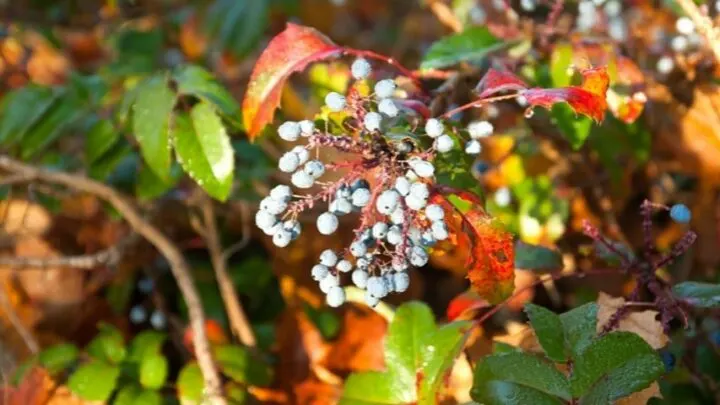There are many plants and shrubs that produce delicious berries for humans and birds.
Apart from leaves and flowers in a garden, berries also make the garden look beautiful and also provide you with fruit that can be used to make different desserts and pies and can also be eaten raw.
Shrubs with berries add color to your garden and make it attractive.
10 Shrubs with Blue Colored Berries
- Juniper Berry (Juniperus)
- Arrowwood Viburnum (Viburnum dentatum)
- Serviceberry (Amelanchier)
- Tatarian Dogwood (Cornus alba ‘Elegantissima’)
- Biloxi (Ericaceae Vaccinium corymbosum)
- Huckleberries (Vaccinium membranaceum
- Chokeberry (Aronia spp.)
- Salal Berry (Gaultheria shallon)
- Blue Honeysuckle (Lonicera caerulea)
- Elderberry (Sambucus)
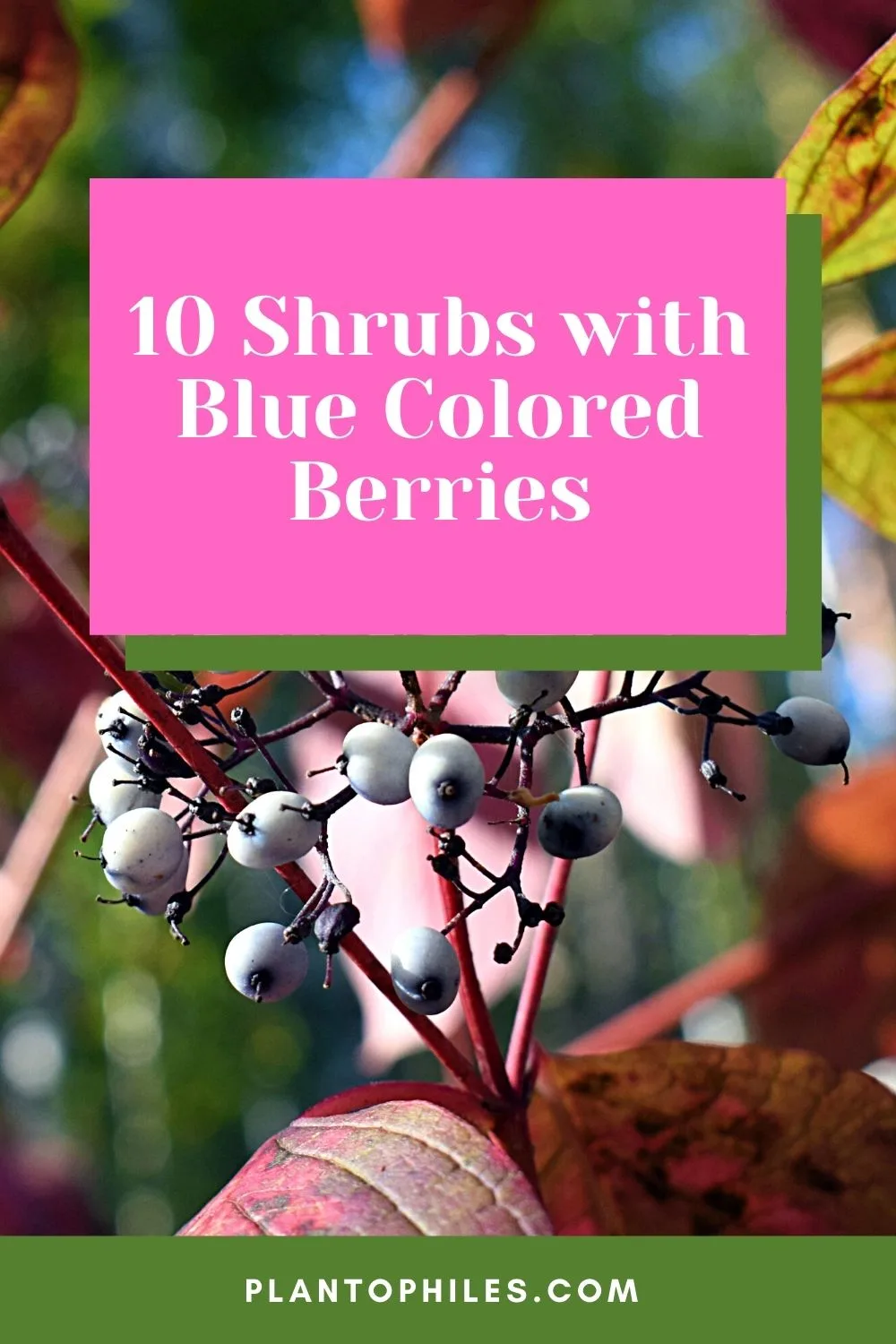
10 Shrubs with Blue Colored Berries
Table of Contents
Shrubs with Blue Colored Berries
All of these blue-colored berries come from different shrubs and have various features and tastes.
These features help you identify them and choose the best berries for your garden. Many of these shrubs are known for both their distinct flavor and properties.
Different berries can be differentiated using various methods. Following are the basic survival requirements:
1. Juniper Berry
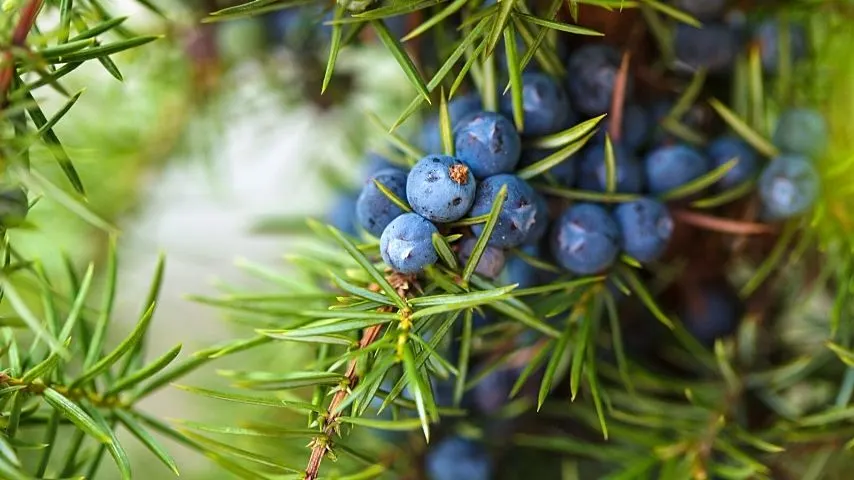
The Juniper Berry is among the shrubs that have blue colored berries that requires low maintenance in terms of care
Juniperus is an evergreen shrub that produces vibrant blueberries from late spring to late winter.
Juniper berries are low maintenance and can tolerate a wide range of atmospheric changes. It can survive in moist as well as dry conditions but cannot withstand waterlogging.
Full sunlight is essential for Juniper berries for their growth, and it needs sandy, acidic soil with compost. It is drought-tolerant and has needle-like leaves.
The plant requires moderate watering except for new plants, which should be thoroughly watered.
These shrubs are best for planting along the fence lines to give coverage to your garden.
2. Arrowwood Viburnum
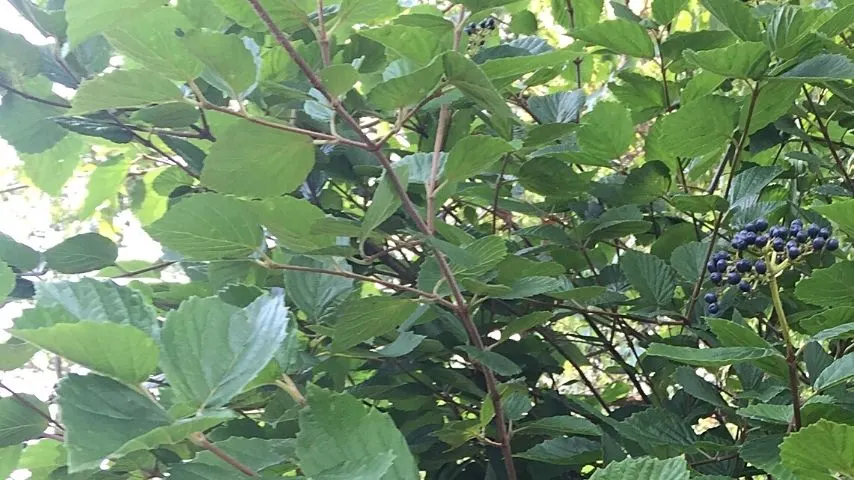
The Arrowwood Viburnum is another shrub with blue berries that’s also known for producing white flowers late in spring
Arrowwood Viburnum is a low-maintenance flowering shrub that gives beautiful white flowers in the late spring. They have oval-shaped leaves with green stems and are relatively small plants.
The leaves change their color to orange, yellow, and red according to the weather.
It has a medium growth rate and needs well-drained and fertile soil for optimum growth.
It requires occasional pruning and should be planted at a spot receiving sunlight that is direct.
Watering should be kept moderate to avoid waterlogging.
3. Serviceberry
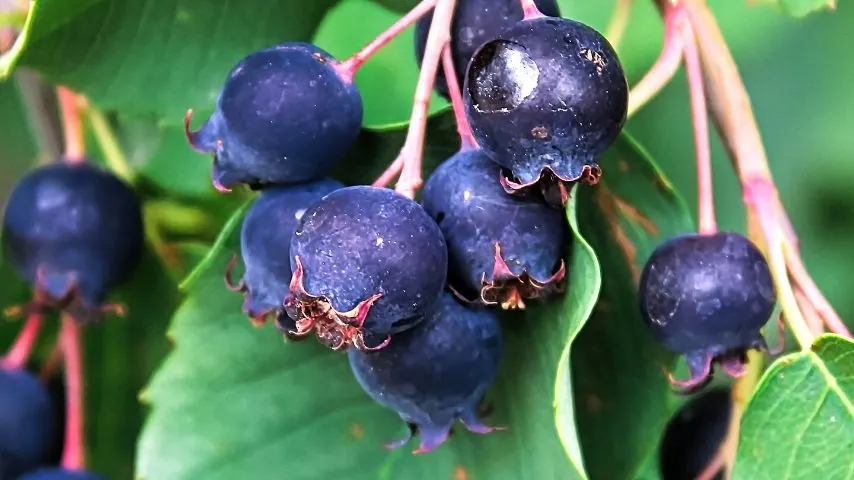
Serviceberry is another shrub known for producing scented blooms in spring and blue berries in summer
Serviceberries are delicious berries that are either grown on bushes or trees, depending upon the grower.
The shrub produces beautiful white flowers during the late spring and has an attractive shape and foliage during autumn.
Serviceberries prefer well-drained, light soil for ideal growth but are also tolerant toward other types of soils.
The shrub produces blue-colored berries during the summer and scented blooms in the spring. The berries are sweet in taste and you can use them for different desserts.
4. Tatarian Dogwood
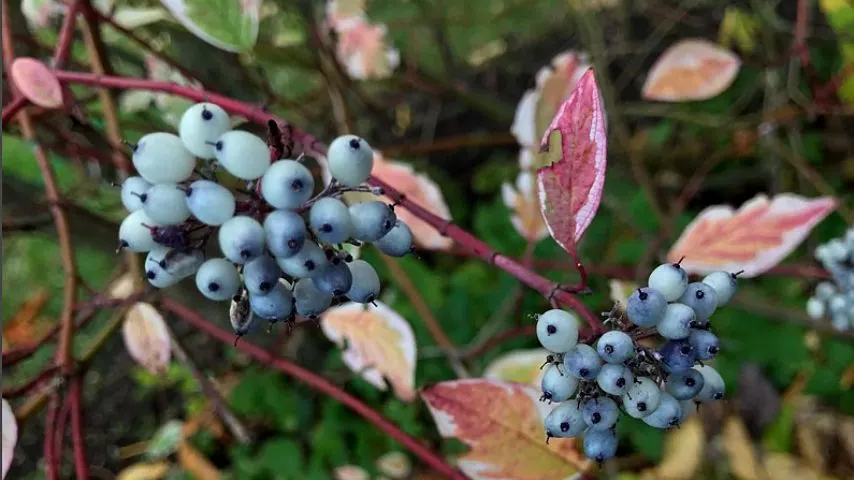
Photo Credit: @greenhearts.life on Instagram!
Tatarian Dogwood is a hardy shrub for cool climates. They can tolerate all types of soil, whether it’s dry, wet, compacted, or even poor soil.
They provide the birds with wild blue-colored berries during the summer season.
It is a flowering shrub that gives beautiful yellow flowers in the late spring and colorful bark during the winter.
Although Tatarian Dogwood can adapt to many environmental conditions, it cannot tolerate full shades. It requires full sun for ideal growth.
Its colorful foliage and berries attract various pollinators and help in germination.
5. Biloxi
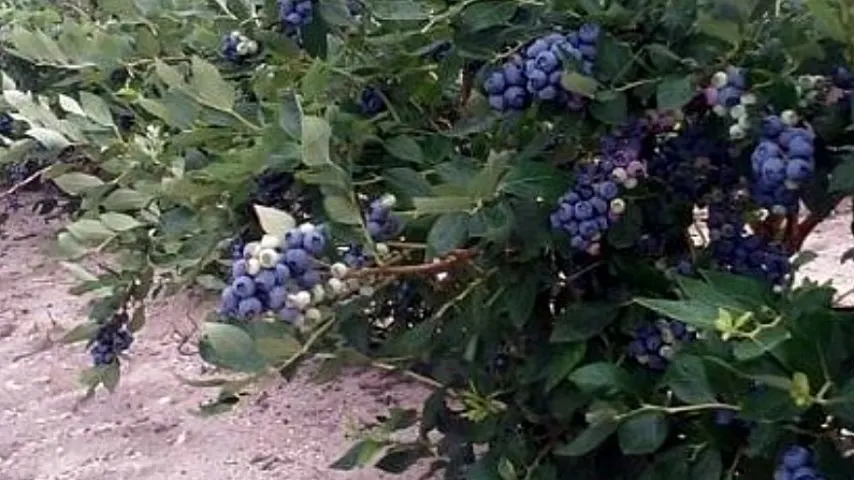
Photo Credit: @ardelproduce on Instagram!
Biloxi is a shrub typically grown in the southern climate zones. The shrub produces delicious blueberries that are juicier than many other types.
Due to this, these blueberries are common for preserving in jams, baking, and freezing.
The Biloxi berries are harvested from April to July, and they have small to medium sizes with round, firm shapes. These blueberries are highly nutritious and have natural antioxidants and vitamins.
They require occasional pruning and cannot tolerate frost. Instead of watering it again and again, the blueberries prefer soil that can retain moisture.
Full sunlight or light shade is essential for the proper growth of Biloxi berries.
6. Huckleberries
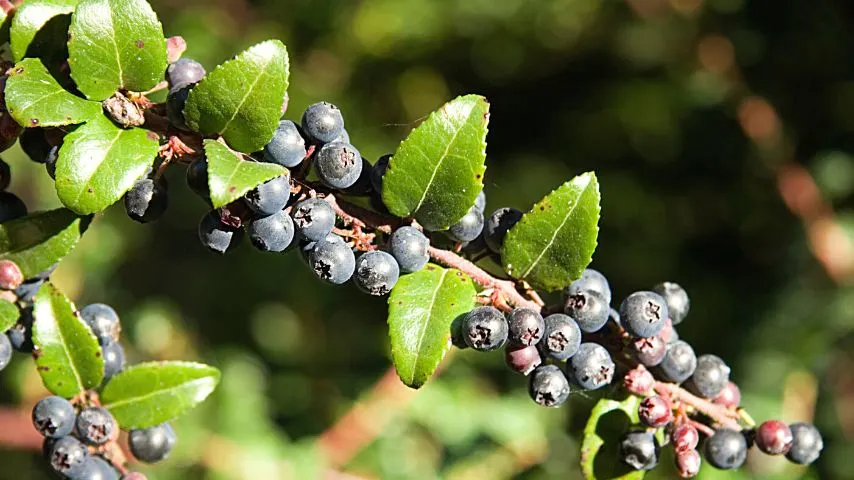
While there are 2 types of huckleberries, the blue-colored huckleberries are used in creating desserts and are very attractive to birds
Huckleberries come in different species, some of them growing in the forest as wild berries and some in your gardens. There are mainly two huckleberry types, blue and black.
The blue huckleberries are dark purple-blue in color and give beautiful pink blooms in spring. They are widely used in desserts, jams, and milkshakes and are an attraction for birds.
Huckleberries grow best in shaded places. The standard height of a huckleberry bush is 2 to 3 feet, but it can also grow up to 10 feet in forests and shaded spaces.
They often grow around ponds and lakes, but homegrown huckleberries need well-drained soil with a slow-release fertilizer.
They thrive in acidic pH, and it is best to grow the huckleberry plant in a pot in the beginning and later transfer it to your garden.
7. Chokeberry
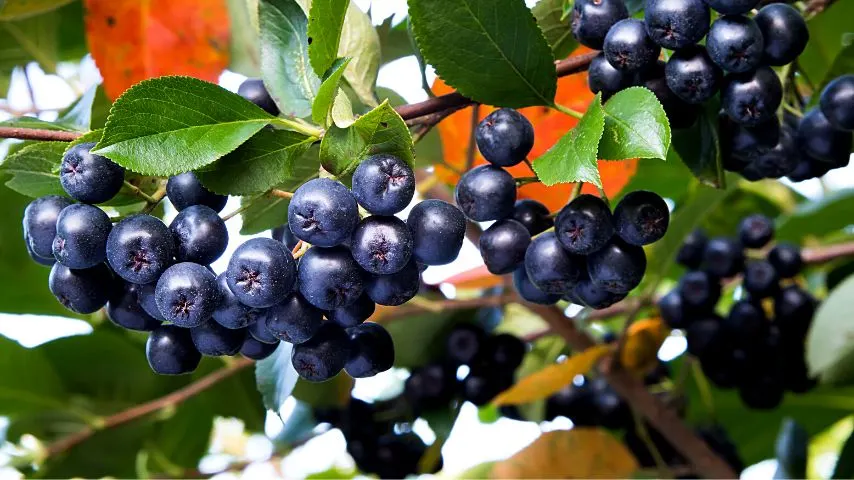
The blue-colored berries of the Chokeberry or the Aronia plant can lead to mouth-drying due to their high vitamin and antioxidant levels
Chokeberries are one of the most beneficial berries for humans. They produce dark blue, purple, and black colored berries during the growing season.
A mature plant of Aronia berries can make an enormous amount of fruit.
These berries are known to have a mouth-drying effect but are very healthy because they contain vitamins and antioxidants, and also help with heart diseases, boost immunity, and may also reduce the risk of cancer.
Aronia berries are easy-to-grow plants and can survive various fluctuations in growing conditions. They need full sun for ideal growth but can tolerate partial shade.
Dry soil and occasional fertilizer are preferred.
8. Salal Berry
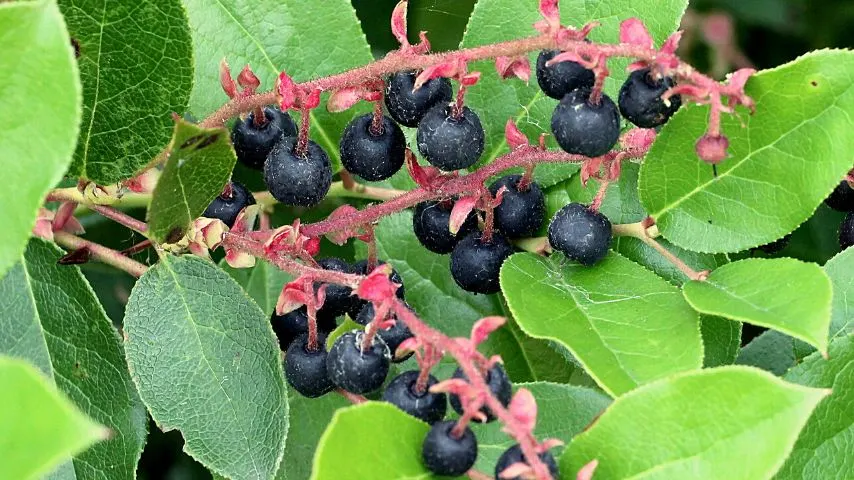
Salal berries are known to produce dark blue-colored berries late in summer
Salal berries are delicious bluish-black berries that are produced in late summer. The salal berry shrub is an easy-to-grow, low-maintenance plant with high tolerance to soil and environment fluctuations.
However, the plant requires frequent watering for moist soil, but waterlogging can cause root rot.
The blooms of the salal berry are bell-shaped, and it has velvety, glossy, dark green leaves that look beautiful in your garden.
You can also prune the shrub according to your liking or if there are any signs of damage.
9. Blue Honeysuckle
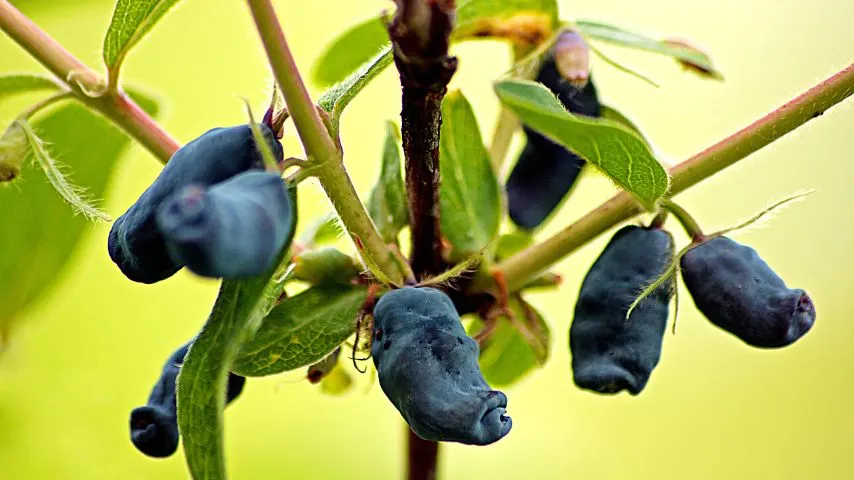
Another shrub that grows blue-colored yet oval berries is the blue honeysuckle, aka the “honeyberry”
Blue honeysuckle, commonly known as ‘honeyberry,’ is a honeysuckle plant that produces fruit in the late summer.
The blueberries on a honeysuckle shrub are not round but small, oval, sweet blueberries that are an addition to the beautiful white flowers in the spring and summer.
This shrub can grow in various soils so long as it’s well-drained. However, it is prone to pests and diseases if not cared for.
They require full sunlight or partial shade for maximum growth. Occasional pruning is also recommended.
The berries develop their taste after they are fully ripened. They have a bad taste if eaten before they are ripened.
10. Elderberry
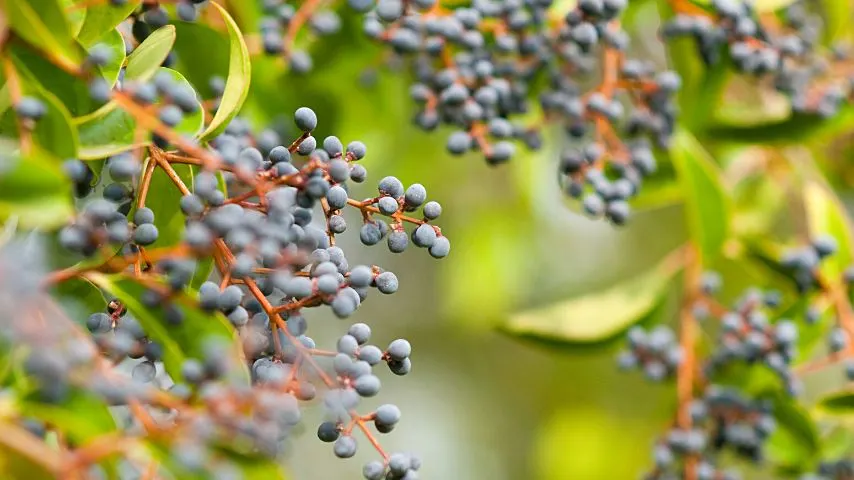
Elderberry plants produce dark blue-colored berries that grow in clusters and are used for various purposes
Elderberries are shiny, dark blue-colored berries that grow in clusters and are used for various purposes, including desserts, wines, pies, jams, and medicinal uses.
They’re very low-maintenance plants and are capable of surviving almost all condition types except drought.
However, if you want more flowers and berries on your elderberry shrub, it is best to keep it in well-drained and moist soil, and also occasionally add fertilizer.
They also prefer full sunlight but partial shade works. The shrub should be watered often during the summer months without rainfall.
Read about Spanish Broom care.
Frequently Asked Questions about Shrubs With Blue Colored Berries
Do blueberries need daily watering?
Blueberries require moist soil, but you should avoid waterlogging. Only water blueberries when the soil’s dry.
What are the best fertilizers for blueberries?
The best fertilizers for blueberries are acid fertilizers.
Do Biloxi blueberries need a pollinator?
Biloxi blueberries do not require a pollinator but planting two Biloxi bushes together increases fruit production.

Daniel has been a plant enthusiast for over 20 years. He owns hundreds of houseplants and prepares for the chili growing seasons yearly with great anticipation. His favorite plants are plant species in the Araceae family, such as Monstera, Philodendron, and Anthurium. He also loves gardening and is growing hot peppers, tomatoes, and many more vegetables.

